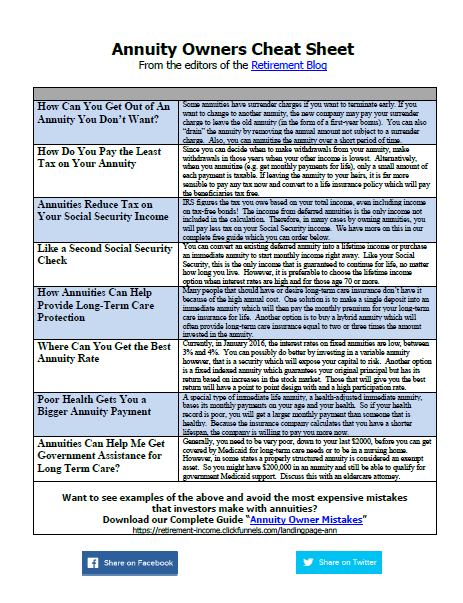Fixed annuities offer a number of ways to harvest their annuity interest. The choice how long you wish to take advantage these payments can be determined after considering your present income and as well as your future money requirements. You may also consider the income needs of one's survivor. Lets look at annuity interest opti0ns.
When studying the various available payout possibilities, there is yet another point you might have to study - the consequences with the annuity tax to you and your beneficiaries.
If you annuitize (trade in your account value in return for a stream of payments), an element of the payments you would receive yearly will be a return on your investment which will be tax-free. The remaining part will nevertheless be taxable. Presuming you are a 65-year old male, the government life expectancy tables assume a remaining lifetime of 20 years, and you'll be offered the following options on a $250,000 investment:
• A life-only payout ceases as soon as you pass away and will provide you close to $20,000 per year. Out of this sum, $12,500 will likely be free from tax and the remaining $7,500 is taxable- resulting in a modest annuity interest tax of $1,875 per year if you are in the 25% tax bracket. If you happen to live past 20 years, you of course continue to receive your payments which are then 100% taxable.
• A life with 20-year guaranteed terms pays for 20 years or all of your lifespan, whichever is more. You're going to get around $17,500 every year -- of which $12,500 will be tax free and the balance amount of $5,000 will become taxable, resulting in a annual annuity interest tax of $1,250 (assuming one falls in 25% bracket). In case you pass away prior to the completion of the guaranteed 20-year payment period, your current beneficiary will receive the balance from the payments with similar tax treatment as your own.
• A 10-year term-certain annuity will fetch an individual around $28,500 per year with $25,000 as free from annuity interest tax and the balance $3,500 liable to tax - that will result throughout annuity interest tax of $875 for a taxpayer in the 25% marginal tax bracket. If you expire within the stipulated 10 year-period, your current beneficiary will get the income for the remaining period in a similar manner.
Of course, you don't need to annuitize fixed annuities. Any time after the first year, you are generally free to withdraw annuity interest. And at the end of the term, you may withdraw interest and all principal without surrender costs. In such cases, interest is taxable in full as withdrawn.
You should understand that the annuity interest tax calculations shown above are only estimates for purposes of example. They do not indicate any specific investment amount. The key educational value of this illustration is to see that how you take your annuity interest determines how it is taxed and your ultimate after-tax return.

Leave a Reply